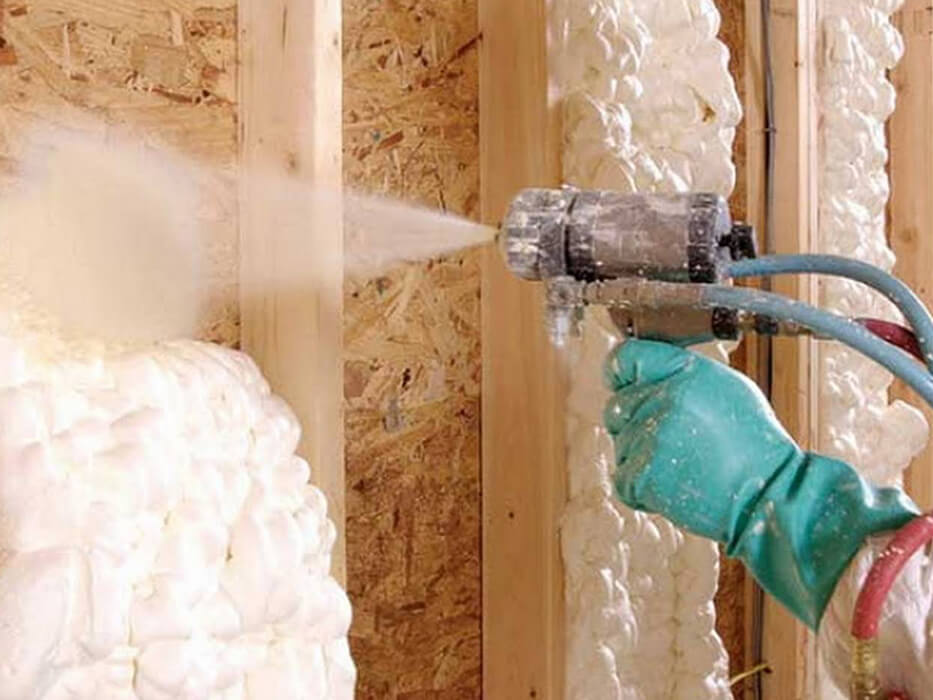If your goal is constructing or retrofitting a house that’s environmentally attuned, spray foam insulation inevitably makes it to your list of considerations. This insulation technique, celebrated for its outstanding thermal qualities, plays a pivotal role in minimizing greenhouse gas emissions by slashing the HVAC demands of structures. But, as with many construction materials, it carries both advantages and drawbacks.
Digging into the Core of Spray Foam Insulation
Essentially, spray foam insulation materials are designed to insulate surfaces and minimize air leaks in various architectural sections like attics, crawl spaces, and wall cavities of newly constructed homes. These are primarily composed of methylene diphenyl diisocyanate and a concoction of polyols, catalysts, flame retardants, and surfactants.
A Close Look at Closed-Cell and Open-Cell Spray Foams
The duality in spray foam insulation is mainly attributed to its two variants: closed-cell and open-cell. Understanding their characteristics is paramount.
Closed-Cell Spray Foam
Dense and robust, closed-cell foam comes with cells filled with a gas that prompts the foam to swell, filling any gaps and voids in its path. As it dries, it becomes rigid, thereby enhancing the structural strength of the area it’s applied to. Boasting an impressive R-value ranging from R-6 to R-7 per inch, closed-cell foam stands out as a moisture-resistant and energy-efficient solution.
Open-Cell Spray Foam
This variant is lighter, with air-filled cells, giving it a more spongy feel. Although it doesn’t bolster structural strength as its counterpart does, open-cell foam is a stellar insulator and creates an effective barrier against external sounds. Its R-value lingers around R-3.6 to R-3.9 per inch, but its expansion rate is superior.
The Rise of Spray Foam Insulation
Since its inception in the 1950s, spray foam insulation has garnered immense popularity. Pioneering developments, such as the launch of eco-friendly versions in 2017, have only accelerated its market demand. As of now, projections suggest the spray foam insulation market might touch the $3.4 billion mark by 2028, thanks to stringent government regulations promoting energy efficiency and reduced greenhouse gas emissions.
A Green Choice with Some Gray Areas
Spray foam insulation is certainly touted as a green option, with the potential to be even greener in the future. Its evolution from a product that was once deemed harmful to the environment to one that now stands as a beacon of eco-friendly promise is commendable. Yet, there are environmental aspects that potential users need to be conscious of.
Comparing Cost Factors in Spray Foam Insulation
Discussing spray foam insulation without addressing costs wouldn’t provide a complete picture. While there’s no denying that the initial investment in spray foam might be higher than traditional insulation materials, the long-term savings are noteworthy. A spray foam-insulated home often benefits from reduced utility bills due to its heightened energy efficiency. Partnering with a leading spray foam company in Ohio like Spray Foam Innovations guarantees homeowners an optimal balance between initial expenditure and eventual savings.
Understanding the Drawbacks of Spray Foam Insulation
While spray foam insulation has become increasingly popular and offers numerous benefits, it’s essential to consider some of its drawbacks before making an informed decision. As a leading spray foam company, Spray Foam Innovations believes in transparency and ensuring customers are well-informed.
- Initial Cost: Spray foam insulation, especially the closed-cell variant, can be more expensive upfront compared to traditional insulation materials like fiberglass or cellulose. Homeowners need to weigh these initial costs against the long-term savings in energy bills.
- Professional Installation Required: Unlike some traditional insulation, which can be a DIY project, spray foam insulation requires professional installation. This is not only for safety but also to ensure the foam is applied correctly for maximum efficiency.
- Potential for Off-Gassing: Some spray foam insulations can off-gas volatile organic compounds (VOCs) after installation. While these emissions usually decrease over time, they can contribute to indoor air quality concerns initially.
- Difficulty in Removal: Once spray foam is applied and set, it’s challenging to remove. If future repairs or modifications are required, removing spray foam can be a labor-intensive process.
- Over-Expansion Risks: If not applied correctly, spray foam can expand more than intended, potentially warping doors or windows.
- Not Always Eco-Friendly: Though many advancements have been made in producing green spray foam options, not all spray foam insulations are created equal. Some may still contain compounds that aren’t environmentally friendly.
Find Superior Solutions with Spray Foam Innovations
As you sift through the choices for insulation, weighing the pros and cons is vital. Whether you’re a DIY enthusiast or someone looking for professional insights, Spray Foam Innovations stands ready to assist. With expertise as a leading spray foam company, our team ensures that your insulation needs are met with precision, quality, and an eco-friendly approach.
Spray Foam Innovations constantly evolves with the changing insulation landscape. Committed to offering superior solutions, we emphasize innovation, ensuring that homes not only remain cozy but also environmentally efficient. By merging the latest technology with proven methodologies, Spray Foam Innovations assures homeowners of an insulation solution that stands the test of time. Transform your homes into energy-efficient havens with the right insulation. Connect with Spray Foam Innovations today, and let’s create a greener tomorrow together!

